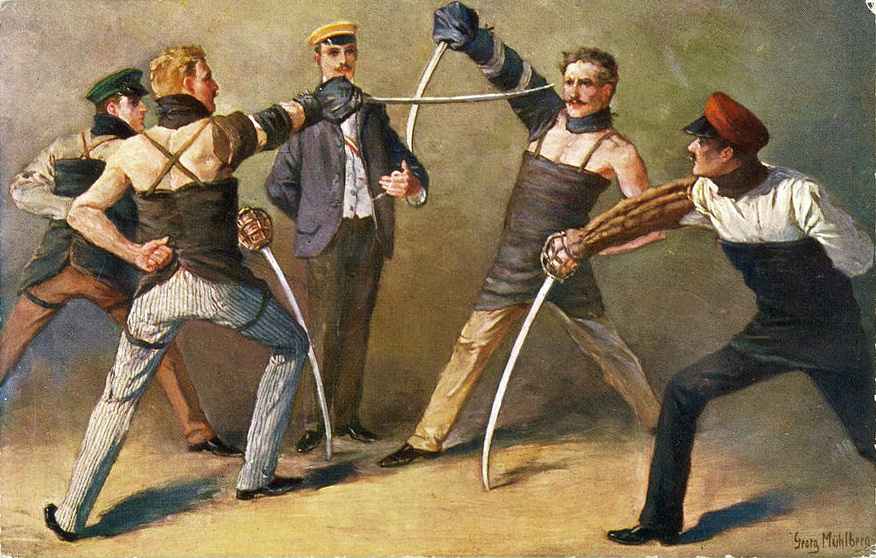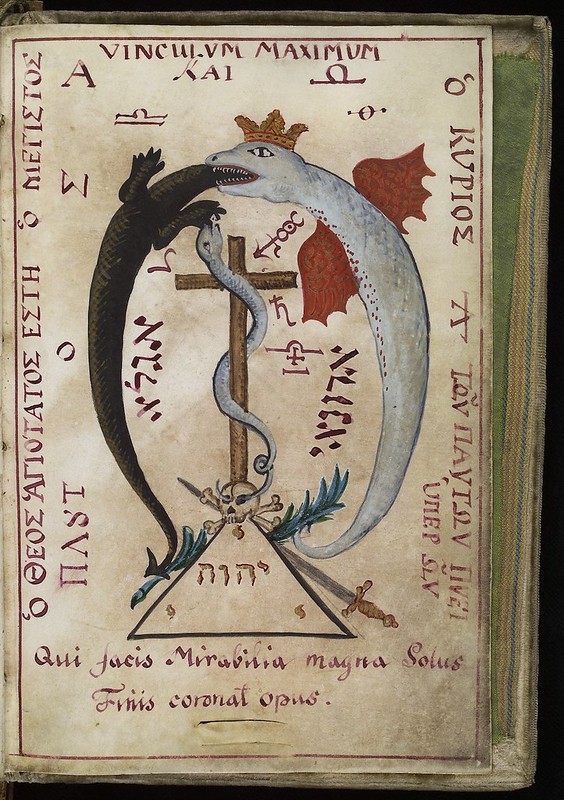 |
| Wilhelm Schubert van Ehrenberg -Dungeon Interior (Wikimedia Commons) |
Imagine, if you will, stepping into the trade floor of the New York Stock Exchange. Conjure the frantic voices of the stock brokers on their phones, the pacing across the floor, the bright lights and blips scrolling on the large screens that hang above the suited rabble. It's a scene of excitement, of high energy and of potential.
Now imagine that the trading floor was occupied by silent, static people who just stared into the middle distance. The screens are blank. Nobody is speaking and not a single phone is to an ear. This is what a poorly made dungeon looks like. It's soulless.
So how do you create the New York Stock Exchange dungeon?
Activity happens in spite of the players
How often have you played or read an adventure where the hobgoblins are just standing around in a non-descript room and only act until the PCs enter? It happens and I'm guilty of this shit too.
It's a very old school videogame way of level design. Walk into a room and some skeletons are just...there. Standing. There's no excitement to be had - just a room with some more monsters that need punching.
Dungeons are alive. They should be thriving hubs of activity where monsters scheme, get into trouble and actually talk to each other. As a GM you should decide what the inhabitants of the dungeon are doing when the players aren't around? Are there rival goblins who are trying a game of one-up-manship? Is an orc teaching an apprentice how to muck out the boar stables?
This is a huge help for when the players are listening against doors. You'll have a much easier time describing the sounds of a specific activity than a bunch of dudes sitting around a table staring at each other until the PCs enter. Think of all the activity that happens on the trading floor and use iy as inspiration for your dungeon.
Show, don't tell
Suppose you had no idea what the stock exchange was and you were transported right into the middle of the trading floor. Seeing the prices on the screens, the frantic buying and selling, the company names, you would soon be able to piece together a semblance of what's happening bit by bit. This process is intellectually rewarding and it's no different in a dungeon. Instead of telling the players that "a sinister rat person stands there, intending to kill you with its blade" actually show them the scene and allow them to piece it all together. "A rat person with a twisted snarl fresh blood dripping from its unsheathed blade" is much more effective in conjuring an image and allowing the players to fill in the blanks.
Build competition in your dungeon
Just like stockbrokers looks after the interest of their own clients, your inhabitants should have their own interests and goals, some of which will be at loggerheads.
Factions offer a wealth of role-playing potential for the players. A faction should have a goal of their own, which is often at odds with a rival faction. This creates a pressure cooker environment where PC intervention can set off a chain of events that effect both factions, and that's fucking fun to see.
I've already talked about
how forced combat is a pile of crap and how role-playing offers a much more nuanced game. Competing tribes can really help create amazing memorable moments in your game.
A dungeon doesn't need to be rational, but it should make sense
What happens on the trading floor is a weird thing. It's its own little bubble with its own language and traditions. To someone seeing it for the first time, everything would seem quote alien. But within that world everything makes sense.
This applies to your dungeon. I call it Internal Dungeon Logic. It's nothing new but it's worth bearing in mind. A dungeon can live in its own little bubble where up is down and doors flirt with you. It's important to make sure that this weirdness has its own internal logic, that the rules you set out in your dungeon don't contradict each other. This way, the players will start to put together a picture with of how the place works, giving smart players informed decisions and the ability to play around with the environment.
A living dungeon is one with soul. It's a playground for the players, a pressure cooker of ideas. Having activity in your dungeon, or city or wherever, will help the players feel like they're part of something bigger than themselves and where they can influence and be influenced. It's the New York Stock Exchange, but with fewer evil NPCs.













